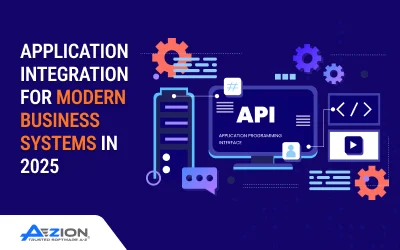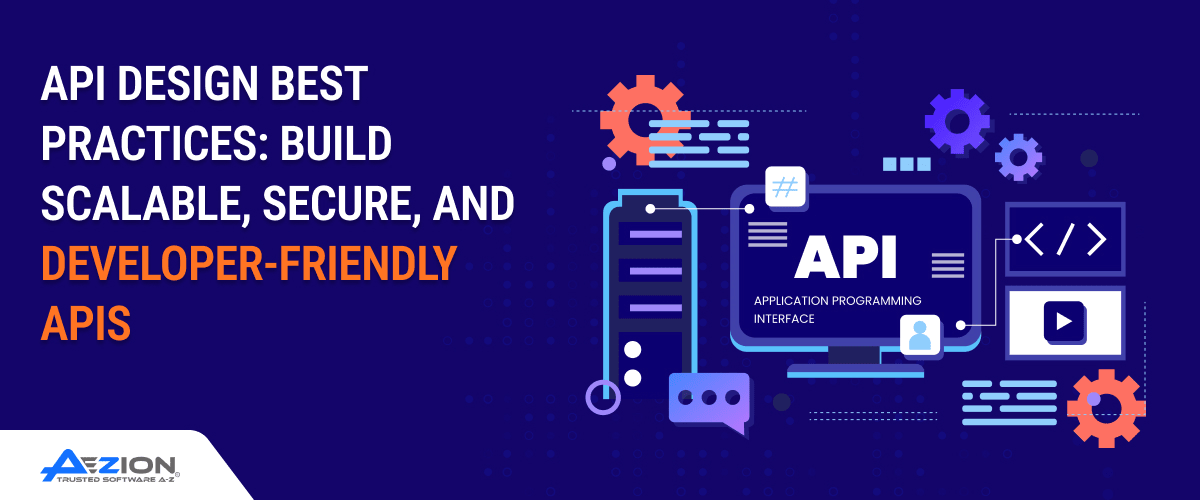Summary
Well-designed APIs improve usability, simplify integration, and make systems scalable. This blog covers the Best Practices for API Design, common mistakes, tools, and real-world examples to help build high-quality APIs that deliver long-term value and consistency.
Introduction
A well-structured API is the backbone of modern software connectivity. Following API Design Best Practices reduces complexity, improves service communication, and helps developers build integrations faster. This blog explores actionable techniques to create scalable, secure, user-friendly APIs for long-term success.
Why Does Good API Design Matter?
Clear and consistent API design lays the foundation for scalable, secure, and maintainable software systems. When APIs follow predictable patterns, integration becomes smoother, technical debt decreases, and long-term maintenance is more manageable. Good design practices also help enforce security, simplify onboarding, and future-proof your architecture.
Improves Developer Experience
A well-designed API feels intuitive and predictable. Developers can understand how it works without constant reference to documentation. This ease of use accelerates integration, reduces support tickets, and improves overall satisfaction during development.
Supports Scalability and Integration
Structured APIs simplify how services interact and grow. When endpoints are consistent and logically designed, it becomes easier to scale systems, integrate with third-party tools, and maintain service performance as user demand increases.
Reduces Technical Debt
Poorly structured APIs lead to workarounds, duplicated logic, and inconsistent behavior. By applying solid design principles early, teams avoid long-term inefficiencies, minimize refactoring, and maintain cleaner, more maintainable codebases over time.
Enhances Security and Governance
Strong API design includes transparent authentication, authorization, and data validation rules. This consistency reduces vulnerabilities, improves compliance, and allows centralized access and usage monitoring across distributed systems.
API Design Best Practices
Following API Design Best Practices helps create scalable, easy-to-consume, and secure APIs. This section outlines proven techniques for structuring endpoints, handling requests, and maintaining consistency across evolving systems.
Use RESTful Principles or Clearly Define Your Style
Adopting RESTful API Design Best Practices ensures consistency through resource-based URLs, stateless communication, and standard methods like GET, POST, PUT, and DELETE. If using non-REST styles such as GraphQL or RPC, clearly define your structure, patterns, and expectations to maintain developer clarity and avoid misuse.
Keep Resource URIs Intuitive and Consistent
Design URIs using nouns that represent resources, not actions. Maintain consistent patterns across endpoints to simplify usage, improve clarity, and reduce the need for documentation during integration or debugging. Avoid ambiguity in path structure.
Use Proper HTTP Methods and Status Codes
Assign standard HTTP methods like GET for retrieval, POST for creation, PUT for updates, and DELETE for removal based on the action. Return appropriate status codes like 200, 201, 400, or 404 to communicate results, support consistent behavior, and improve debugging and error handling during client-side integration.
Version Your APIs Thoughtfully
Use versioning to manage changes without disrupting existing users. URI-based (e.g., /v1/) or header-based methods work well. Introduce breaking changes in new versions, allowing clients to upgrade gradually while maintaining compatibility with older integrations still in active use.
Validate and Sanitize Inputs
Continuously validate and sanitize all incoming data to prevent injection attacks, malformed requests, and unexpected behavior. Define strict input rules at the API layer, reject invalid payloads early, and avoid passing unchecked data downstream to protect internal systems and user experience.
Design for Pagination, Filtering, and Sorting
Support pagination to handle large datasets efficiently. Provide filtering and sorting options to help clients retrieve only the needed data. Use query parameters consistently and clearly to maintain performance and reduce unnecessary response payloads.
Include Meaningful Error Messages
Return clear, descriptive error messages that help developers diagnose problems quickly. Include status codes, error types, and guidance in the response. Avoid exposing internal stack traces, but provide enough context to correct issues without back-and-forth or guesswork during debugging and integration.
Document Everything with OpenAPI or Swagger
Use tools like OpenAPI or Swagger to create interactive, up-to-date documentation. Include endpoint definitions, parameters, request examples, and response formats. Well-maintained documentation improves adoption, reduces support requests, and helps developers understand and integrate your API quickly and correctly.
Secure with Authentication and Rate Limiting
Implement authentication using tokens, OAuth, or API keys to control access. Apply rate limiting to prevent abuse and protect infrastructure. Clearly define permissions and quotas, so clients know their limits and can integrate safely without risking performance or exposing sensitive resources.
Follow Naming Conventions and Standards
Use consistent naming for endpoints, parameters, and fields. Stick to lowercase letters with hyphens or underscores, and avoid abbreviations. Standardized naming improves readability, prevents confusion, and makes the API more straightforward, especially when onboarding new developers or collaborating across multiple teams.
Common API Design Mistakes to Avoid
A few unprecedented design mistakes can lead to poor developer experience, security vulnerabilities, and long-term maintenance issues. Identifying and avoiding these pitfalls helps maintain consistent, scalable, and secure APIs that remain stable and easy to integrate over time.
Overloading Endpoints
Designing endpoints to handle multiple operations or return varying data types leads to confusion and complexity. Keep each endpoint focused on a single purpose to improve clarity, reduce errors, and support clean, maintainable integrations for developers.
Ignoring Error Handling
Skipping structured error handling makes debugging difficult. Always return clear error codes and messages. Define common failure scenarios and responses to help developers recover gracefully, avoid guesswork, and build more stable integrations using your API.
Lack of Versioning
APIs without versioning create integration risks when changes are deployed. Even minor updates may break existing clients. Introduce versioning early to manage updates cleanly, support backward compatibility, and give consumers control over when to adopt new changes.
Inconsistent Naming
Unclear or inconsistent naming leads to confusion and mistakes during integration. Stick to a standard naming pattern for resources, fields, and parameters. Consistency improves readability, simplifies onboarding, and makes it easier for developers to understand and trust the API.
Neglecting Security Headers and Throttling
Omitting security headers and throttling exposes APIs to abuse and vulnerabilities. Include headers like CORS and CSP, and enforce rate limits to protect infrastructure. These measures reduce risk and build a safer environment for users and services.
Tools and Resources for API Design
API design is more effective when supported by the right tools. These resources help define structure, simulate requests, validate compliance, and manage lifecycle documentation, all of which are essential for creating consistent, scalable, and developer-friendly APIs.
OpenAPI/Swagger
OpenAPI and Swagger allow you to define your API’s structure in a standardized format. These tools generate interactive documentation, support validation, and streamline team collaboration by keeping your API specs accurate, accessible, and easy to maintain.
Postman
Postman simplifies API testing and collaboration by allowing users to create, send, and manage requests easily. It supports environment variables, automated tests, and shared workspaces, making it ideal for development and quality assurance workflows.
Stoplight
Stoplight provides a visual API design interface with OpenAPI support, enabling teams to collaboratively model, document, and test APIs. Its mock servers and linting features improve accuracy, while integrated workflows enhance consistency across design, development, and documentation stages.
API Gateway Providers (e.g., Kong, Apigee)
API gateways like Kong and Apigee handle traffic routing, authentication, rate limiting, and monitoring. They centralize control, improve scalability, and enforce policies across services, making managing complex API infrastructures securely and efficiently easier.
Linters and Validators
Linters and validators check your API definitions for errors, inconsistencies, and violations of design rules. Tools like Spectral or Swagger Editor help enforce standards, catch issues early, and maintain consistent API specifications across development and deployment environments.
Real-World Examples of Well-Designed APIs
Studying production-grade APIs reveals how strong design principles are applied at scale. These examples demonstrate effective use of versioning, clear documentation, consistent structure, and strong error handling, serving as benchmarks for building reliable and developer-friendly APIs.
GitHub REST API
GitHub’s REST API is known for its consistent structure, detailed documentation, and versioning. It uses standard HTTP methods, clear resource naming, and supports OAuth authentication, making it a strong example of developer-focused, scalable API design.
Stripe API
Stripe’s API is praised for its simplicity, detailed documentation, and consistent resource naming. It offers predictable behaviors, thorough error messages, versioning control, and test modes, making payment integration straightforward for developers across various platforms and business use cases.
Twilio API
Twilio’s API offers clear endpoints, excellent documentation, and strong error reporting. It supports REST and HTTP-based messaging, with consistent naming, flexible authentication, and detailed response formats, making integrating communication features like SMS, voice, and video easy.
Slack API
Slack’s API provides rich functionality for messaging, user management, and real-time events. It features modular endpoints and extensive documentation and supports REST and WebSocket-based interactions, making it an excellent reference for building collaborative and interactive application experiences.
How to Continuously Improve API Design
Improving API quality is not a one-time task. Ongoing refinement based on usage data, feedback, and testing ensures long-term usability and performance. This approach helps maintain consistency, adapt to new needs, and deliver a better experience for every integration.
Use API Analytics
Monitor usage patterns, latency, and error rates through API analytics tools. These insights reveal how endpoints perform, highlight issues, and guide improvements. Data-driven analysis helps prioritize changes that improve reliability, efficiency, and developer experience.
Implement Feedback Mechanisms
Allow developers to report bugs, suggest improvements, or request features directly through feedback channels. Continuous input from real users highlights usability gaps and uncovers integration challenges, guiding better design decisions and improving the overall API experience.
Automate Testing
Set up automated tests for endpoints, authentication, and error handling to catch issues early. Continuous testing during development and deployment ensures reliability, prevents regressions, and supports faster iterations without compromising API stability or developer trust.
Adopt an Iterative Documentation Process
Update documentation continuously alongside code changes. Use tools that sync with your API definitions to avoid outdated references. Clear, current docs reduce confusion, support faster integration, and reflect improvements accurately as your API evolves.
Conclusion
Following strong API Design Best Practices helps build clear, stable, and scalable APIs. This supports better integration, reduces long-term issues, and improves the developer experience throughout the development process. If you are a business owner looking for an ideal solution for all your API development needs, get in touch with a qualified Custom Software Development Company like Aezion that brings the right approach and technical skills to deliver well-structured APIs aligned with your business and product requirements.
FAQs
What are the key principles of good API design?
Clear structure, consistent naming, proper versioning, meaningful responses, and secure access are essential. These principles help improve usability, integration, and long-term maintenance across systems.
How do I choose between REST and GraphQL?
Choose REST for simplicity and standard operations. Use GraphQL when clients need flexible data queries or reduced over-fetching. The decision depends on project goals, data complexity, and client requirements.
Should APIs always be versioned?
Yes. Versioning prevents breaking existing integrations and supports gradual updates. It allows developers to maintain older versions while introducing changes through a structured upgrade path.
How do I manage breaking changes in APIs?
Introduce changes in new versions. Communicate updates early, maintain older versions temporarily, and offer clear documentation to support client transitions without disruption.
What tools can help design better APIs?
Tools like Postman, OpenAPI, Swagger, Stoplight, and API gateways support testing, documentation, structure, and monitoring—making it easier to build, manage, and scale APIs efficiently.




